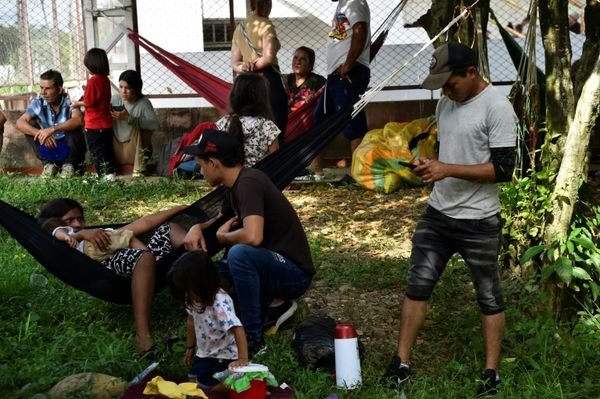
The lockdowns of 2020/2021 galvanised and expanded a readership drawn to writing about the natural world. For the fortunate, the pause and hush offered space to witness the seasons unfolding, to hear voices other than our own, and to realise “our” story is deeply entangled with other lives. Undisturbed by the hum of road and shipping traffic, birdsong and the buzz of pollinators were amplified in our days’ soundtracks, and whales were recorded for the first time speaking in complex “sentences”. With the grave threat posed by the compound climate, ecological and biodiversity crises, a need and longing to repair our connection to the living world is keenly felt by many, and literature is playing a key role.
While the early nature writing canon leaned towards natural history – often at arm’s length, often written by a man out in a “wild” place – recent forms are bringing the issues of our time closer to home in memoir, making vivid the lives of others – human and not. The diversification of authors and of the places, cultures, and beings represented are lending vitality to the genre. A current fascination with the intelligences of the “‘more-than-human” world is firmly placing nature as protagonist rather than in service to a human plot.
Given the Arctic is such an active protagonist in climate change, it is perhaps surprising that the genre has seldom ventured to the far north. I was lucky enough to spend half a decade in Iceland, leaning into its genius loci. I still do, whenever I get the chance: it is a place that allows me to think differently. My debut The Raven’s Nest is an ecological memoir set in its otherworldly Westfjords. I call it ecological because, in life as on the page, it manifests everything as relational and interdependent. Entangled with the story of my marriage to an Icelander, other stories – of people, ravens, storms, the supernatural, life and death – build a weave in cycles of light and dark, into the titular nest. Amid volcanic eruptions and melting ice sheets, people and place are continuous. We are increasingly aware that the far north is not remote but central – in the regulation of climate, ocean currents, and therefore in all our futures. Treading a fine line between insider and outsider, I felt compelled to record what I witnessed and became a part of.
What happens when we listen to the voices which make a place? How might we feel our entanglements with the world to know it as home and treat it as such, even when we are unsure where we belong to? These books, many with a focus on the far north and spanning nearly a century, have inspired how I explore this interplay between place, people, living, thought and the body.
1. A Woman in the Polar Night by Christiane Ritter
In the winter of 1933/4 Ritter, an Austrian painter and self-proclaimed “housewife”, makes the radical decision to join her hunter-trapper husband and a Norwegian hunter in Arctic Spitsbergen, living together in a tiny hut. Often alone for long spells, her mundane chores and her will to survive the extremes uncover marvels, both in the place and her spirit. The imagistic prose is exhilarating. Written as a journal – with long periods tellingly absent – we witness her transformation as she relinquishes herself to this place.
2. The Living Mountain by Nan Shepherd
This dazzling gem written in the 1940s is an intimate journey into the Cairngorms Massif. Shepherd swims naked in clear mountain lochs, walks to be with the mountains as companions, naps on them, looks at them upside down between her legs, thrills in the glow of sparks from her hobnail boots while nightwalking. She probes at the possible, but there are no heroics here. The summit is not the point. It is rather to find new thoughts in the material – in the here and now – which is also metaphysical.
3. Arctic Dreams: Imagination and Desire in a Northern Landscape by Barry Lopez
Written in the 1980s, this is a portal into the Arctic before it was synonymous with climate change. Lopez’s masterwork is the result of years of travel, delving into its histories, fauna, ice, water, stars, light and people – both his Indigenous companions and visiting scientists and workers. Scientifically rigorous, poetic and often reverent in its tone, Lopez builds a prismatic portrait. We are in the hands of a truly reliable and loving guide: an ecologist with a profound respect for knowledge of all kinds, so humble and curious that his words and thoughts seem almost prayerful.
4. Wild: An Elemental Journey by Jay Griffiths
Partly in response to a debilitating depression, Griffiths makes a seven-year journey across the Earth to which she gives everything, in search of the meaning of “wild” – in the world and in herself. Using the elements as a structural device – Earth, Water, Fire, Wind (and she adds Ice) – she travels to the Peruvian Amazon, the Indonesian Ocean, the Australian bush, the mountains of West Papua, and the Canadian Arctic. Through sharp and heartful observation of these places and a high regard for the indigenous knowledges she encounters, her philosophical inquiry takes us to far corners of our minds, using a deeply embodied prose and wild language that writhes on the tongue.

5. Braiding Sweetgrass by Robin Wall Kimmerer
Kimmerer’s world is animate and abundant. She is in love with it, and moves through it as if it loves her back. She asks what might “right relationship” look like in a damaged world? What is the language of reciprocity, the “grammar of animacy”? Drawing on her native Potawatomi culture, twined with her training as a bryologist, she shows us how science and culture, myth and reality are not opposed but live within one another.
6. Land of Love and Ruins by Oddný Eir
This beautiful, pioneering autofiction mainly set in Iceland is a deceptively small and easy text which covers vast swathes of philosophical terrain in a variety of landscapes and homescapes. Written as a journal marked by feast days, equinoxes and the stages of the moon, Eir’s sensuous and breezy narrative voice explores what shape of existence might allow a woman to tend well to all those relationships which make her: to her living kin, to her ancestors, to a partner and to the Earth itself, without losing herself.
7. Small Bodies of Water by Nina Mingya Powles
A series of loosely connected essays, Small Bodies of Water’s luscious prose flows deftly between moments in the author’s international life, each so vividly and sensuously portrayed as to immerse us in a world, and the age at which that world was lived. We move with Powles across time and geography – from adolescence to adulthood, from Borneo to New Zealand to London – exploring the fluid (and sometimes suspended) nature of identity and home. Deeply embodied, the pleasures of swimming, food, languages, flora and fauna are keenly felt as anchors, and an almost aqueous merging of the bloodline across generations pulses through it.
8. Soundings by Doreen Cunningham
A failed relationship and resulting professional and financial ruin compel former climate journalist Cunningham to make a bold move. Taking out a bank loan, she travels with her young son along the migration route of the grey whales, from Mexico to the Canadian Arctic, back to a family of Iñupiaq whale hunters who took her in as one of their own years earlier on a research trip. Cunningham’s honouring of the hunters’ culture is nuanced by this entanglement, and the endless wait of the whale hunt is made fascinating by her quiet observations. The protagonists make a deeply refreshing triad: a single mother travelling with her child, learning from the whales how to parent.
9. On Time and Water by Andri Snær Magnason
A poetic and heartful treatise which argues that we lack the metaphors to carry the enormity of the ecological crisis. We do not – cannot – truly understand words such as “climate change” and “ocean acidification”, so cannot respond appropriately. Approaching them slant through myth and family history (his grandparents honeymooned as participants in one of the first Icelandic glaciological surveys) Magnason’s simple proposition elicits a shift in perspective to connect to the future “in an intimate and urgent way”. By invoking our time as “the handshake of generations” – the period inhabited by those who have loved us, ourselves, and those who we will love in the future – he brings the impacts of this unknown future close to our hearts.
10. Islands of Abandonment: Life in the Post Human Landscape by Cal Flyn
In rigorously researched and poetic prose Flyn manages a rare feat: an angle on nature writing that is entirely new. Travelling to places that humans once inhabited, then destroyed and (mostly) left, she returns to see what has thrived in their wake. From the abandoned buildings of Detroit to Chernobyl to the “bings”(spoil heaps) of Scotland’s West Lothian, she finds a strange kind of abundance. Flyn proposes that rather than purely lamenting a lost vitality in the natural world, we might also reframe and cultivate our aesthetic sensibilities to see, and appreciate, the life in ruins.
• The Raven’s Nest by Sarah Thomas is published by Atlantic Books. To help the Guardian and Observer, order your copy from guardianbookshop.com. Delivery charges may apply.







